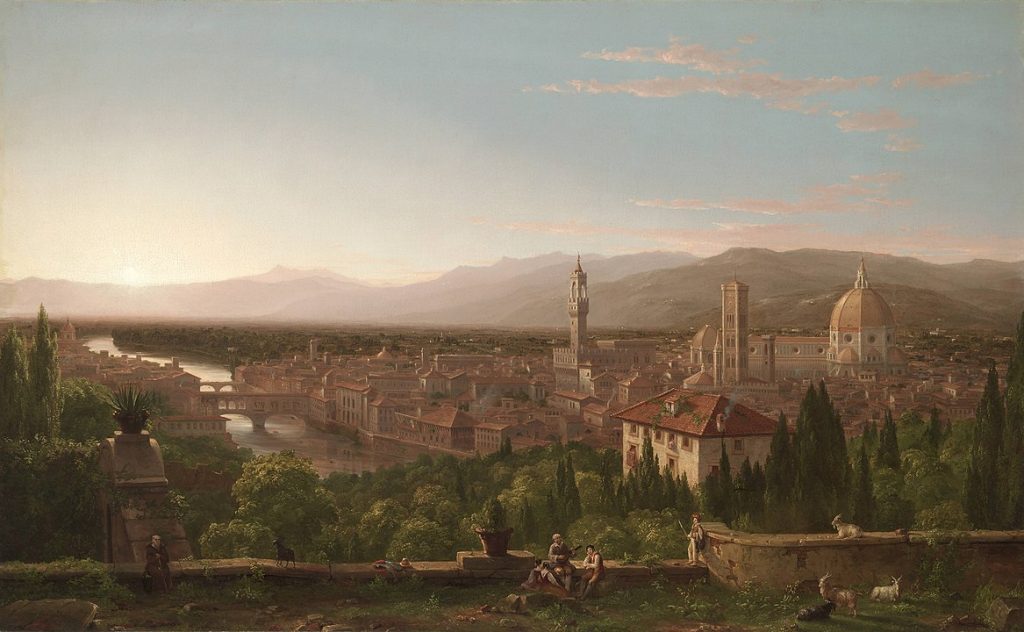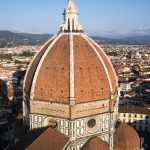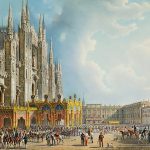
Florence, often called the cradle of the Renaissance, is a city that overflows with artistic, architectural, and cultural treasures. Among its many iconic landmarks, one stands out as a symbol of its ingenuity and ambition: Il Duomo, officially known as the Cathedral of Santa Maria del Fiore. This architectural marvel is not just a church but a testament to the brilliance of the human spirit during one of history’s most transformative periods. Its imposing dome, intricate facade, and storied history captivate millions of visitors each year. Il Duomo is more than a building; it is a masterpiece that bridges the past and the present, reminding us of Florence’s enduring legacy.
The Historical Background of Il Duomo
The Early Days of Florence’s Cathedral
The history of Il Duomo begins in the late 13th century when Florence was emerging as one of Europe’s most prosperous and powerful city-states. Before the construction of Santa Maria del Fiore, the city’s primary cathedral was Santa Reparata, a modest structure that no longer reflected Florence’s burgeoning wealth and influence. The decision to replace Santa Reparata with a grand cathedral was both practical and symbolic, serving as a testament to the city’s ambition and devotion. Its construction was seen as a communal effort, reflecting the shared pride of the citizens.
Florence’s leaders envisioned a structure that would rival the great cathedrals of Europe, such as Notre-Dame in Paris and Chartres Cathedral. The city’s rising prominence in trade and banking required a landmark that matched its reputation. Santa Maria del Fiore was designed to be not only a place of worship but also a civic monument, embodying Florence’s ideals of beauty, innovation, and faith. The cathedral’s sheer scale was a bold declaration of the city’s aspirations, signaling to the world that Florence was at the forefront of cultural and intellectual achievement.
The cornerstone of Santa Maria del Fiore was laid in 1296, marking the beginning of a project that would span several centuries. Its construction required vast resources and the collaboration of some of the greatest minds of the Renaissance. Over time, it became clear that the cathedral was more than a building—it was a labor of love, involving artisans, laborers, and visionaries who dedicated their lives to its completion.
The Visionaries Behind the Project
The design and construction of Il Duomo attracted some of the greatest architects of the era, beginning with Arnolfo di Cambio, who envisioned the cathedral as a Gothic masterpiece. Di Cambio’s initial plans emphasized verticality, intricate detailing, and a sense of divine majesty. He designed the cathedral to include soaring arches, expansive windows, and a massive dome that would crown the structure. However, the technology to build such a dome did not yet exist, making his vision both daring and problematic.
After di Cambio’s death, the project passed through the hands of several architects, including Giotto di Bondone and Francesco Talenti. Each made significant contributions to the cathedral’s progress. Giotto, famous for his work as a painter and sculptor, focused on designing the cathedral’s Campanile, or bell tower. Talenti, on the other hand, expanded the nave and refined di Cambio’s original plans, preparing the cathedral for the monumental task of constructing the dome.
The architects and planners were not merely building a cathedral; they were laying the groundwork for Florence’s identity. Each phase of construction reflected the city’s evolving artistic and intellectual ideals. These visionaries understood that they were contributing to a legacy that would inspire future generations, making Il Duomo a symbol of human ambition and ingenuity.
The Influence of the Renaissance on Construction
By the time construction of Il Duomo was underway, Florence had become the epicenter of the Renaissance, a period marked by unparalleled advancements in art, science, and architecture. The cathedral’s design reflects these Renaissance ideals, blending Gothic traditions with emerging humanist principles. Santa Maria del Fiore was more than a religious structure; it was a canvas for experimentation, where architects and artisans pushed the boundaries of what was possible.
Civic pride played a crucial role in the cathedral’s construction. The people of Florence saw Il Duomo as a reflection of their city’s greatness and a testament to their collective effort. Wealthy families, guilds, and ordinary citizens contributed funds and resources to ensure its completion. This communal investment in the project underscored the Renaissance emphasis on civic responsibility and shared achievement.
The Renaissance spirit is perhaps most evident in the cathedral’s dome, an architectural feat that would become a defining symbol of the era. Its construction required innovative thinking, collaboration, and a willingness to challenge conventional methods. Il Duomo’s creation stands as a testament to the Renaissance belief in the power of human ingenuity and the pursuit of excellence.
Brunelleschi’s Dome: An Architectural Marvel
The Dome’s Ingenious Design
When the time came to construct the dome, the project faced an unprecedented challenge: how to build a structure of such magnitude without collapsing under its own weight. Enter Filippo Brunelleschi, a goldsmith turned architect who would revolutionize architectural engineering. Brunelleschi’s innovative design solved the problem by creating a double-shell dome, with an inner and outer layer supported by a framework of ribs.
Brunelleschi’s approach was groundbreaking. Rather than relying on traditional wooden scaffolding, he devised a system of herringbone brickwork that distributed weight evenly and allowed the dome to be constructed in sections. This technique not only ensured structural stability but also reduced the need for extensive support during construction. His bold methods transformed what many had thought was an impossible task into a masterpiece of engineering.
The dome, completed in 1436, remains one of the largest masonry domes in the world. Its design continues to be studied by architects and engineers for its ingenuity and elegance. Brunelleschi’s achievement marked a turning point in architectural history, demonstrating that human creativity and determination could overcome even the most daunting obstacles.
Construction Techniques and Materials
The construction of the dome required not only ingenuity but also the development of specialized tools and techniques. Brunelleschi designed custom machinery, including hoists and cranes, to lift heavy materials to unprecedented heights. These machines were powered by oxen and utilized counterweights to maneuver massive stones and bricks with precision.
The dome’s brickwork is one of its most remarkable features. Brunelleschi employed a herringbone pattern that interlocked the bricks, creating a self-supporting structure. This method allowed the dome to be built layer by layer without the need for wooden scaffolding. The use of lightweight materials further reduced the strain on the walls of the cathedral, ensuring the structure’s longevity.
Construction of the dome took over 16 years, during which Brunelleschi supervised every detail, from the placement of bricks to the composition of mortar. His meticulous attention to detail and innovative spirit set a new standard for architectural excellence. The dome’s completion was celebrated as a triumph not only for Florence but for the entire Renaissance movement.
Artistic and Symbolic Significance
The dome of Santa Maria del Fiore is more than an architectural wonder; it is a symbol of the Renaissance ethos. Its sheer scale and elegance reflect the era’s belief in the harmony between human achievement and divine inspiration. The dome’s lantern, which crowns the structure, serves as a beacon of light, symbolizing enlightenment and spiritual transcendence.
Inside the dome, frescoes by Giorgio Vasari and Federico Zuccari depict the Last Judgment, adding a layer of artistic grandeur to the structure. These frescoes, with their vivid imagery and theological themes, remind visitors of the cathedral’s sacred purpose while celebrating the artistic mastery of the Renaissance.
Viewed from afar, the dome dominates Florence’s skyline, serving as a visual representation of the city’s cultural and artistic legacy. It has inspired countless architects, artists, and thinkers, becoming a symbol of what humanity can achieve when guided by creativity, determination, and faith.
Art and Decor of the Cathedral
The Façade: A Work of Many Eras
The facade of Santa Maria del Fiore, with its vibrant marble panels of green, pink, and white, is one of the most striking aspects of Il Duomo. However, this ornate exterior was not completed until the 19th century, several centuries after the cathedral was consecrated. The original medieval facade, designed by Arnolfo di Cambio, was dismantled in the 16th century, leaving the cathedral bare for more than 300 years. The current facade, designed by Emilio De Fabris, was unveiled in 1887 and reflects the Gothic Revival style popular at the time.
De Fabris’ design harmonized with the cathedral’s overall architecture while incorporating intricate carvings, statues, and mosaics. The facade’s detailed decoration includes biblical scenes, saints, and symbols of Florence, tying the cathedral’s religious purpose to the city’s cultural identity. The blend of geometric patterns and figurative elements creates a visual narrative that is both spiritual and civic.
The choice of colored marble—white from Carrara, green from Prato, and pink from Maremma—adds to the facade’s splendor. These materials, sourced locally, highlight the connection between the cathedral and its Florentine roots. Standing before the facade, visitors can marvel at the interplay of color, light, and texture that makes it a masterpiece of design.
Interior Design and Features
Inside Il Duomo, the decor contrasts starkly with the elaborate exterior, reflecting a more austere Gothic style. The cathedral’s vast interior space, designed to accommodate thousands of worshippers, is relatively simple in ornamentation, drawing attention to its architectural form rather than lavish decoration. However, the simplicity of the space enhances the impact of its artistic features.
The frescoes adorning the dome are among the most significant interior artworks. Painted by Giorgio Vasari and Federico Zuccari, the frescoes depict the Last Judgment, a vivid and dramatic scene filled with angels, demons, and biblical figures. The scale and detail of this work are overwhelming, inviting contemplation of both its artistic achievement and its spiritual message.
Other notable features include Paolo Uccello’s clock, a unique timepiece that runs counterclockwise, reflecting the liturgical hours of the day. The stained-glass windows, designed by Renaissance masters such as Donatello and Lorenzo Ghiberti, cast colorful light into the space, adding a sense of divine presence. These elements combine to create an atmosphere of reverence and wonder, inviting visitors to reflect on the cathedral’s spiritual and cultural significance.
The Baptistery and Campanile
Adjacent to the cathedral, the Baptistery of San Giovanni and Giotto’s Campanile form an integral part of the Piazza del Duomo. The Baptistery, one of Florence’s oldest buildings, is renowned for its gilded bronze doors designed by Lorenzo Ghiberti. Dubbed the “Gates of Paradise” by Michelangelo, these doors depict scenes from the Old Testament in breathtaking detail, demonstrating the Renaissance mastery of perspective and relief sculpture.
Giotto’s Campanile, or bell tower, is a masterpiece of Gothic architecture. Rising 85 meters, it is adorned with intricate panels and statues that narrate biblical and allegorical themes. Visitors can climb the tower’s 414 steps for a spectacular view of the cathedral and Florence’s rooftops. Together, the Baptistery and Campanile complement Il Duomo, enriching the spiritual and architectural narrative of the complex.
The harmonious relationship between these structures underscores the unity of art, architecture, and faith in Renaissance Florence. Each element of the Piazza del Duomo contributes to the ensemble’s grandeur, making it one of the most remarkable architectural settings in the world.
Il Duomo as a Symbol of Florence
Civic Pride and Religious Devotion
From its inception, Il Duomo has been a symbol of Florence’s civic pride and religious devotion. Its construction was funded not only by the church but also by the city’s guilds, reflecting a collective effort to create a monument worthy of Florence’s status. The cathedral’s design and scale were intended to glorify God while showcasing the ingenuity of the city’s artisans and engineers.
The cathedral also served as a unifying force in a city often divided by political rivalries. Its completion was a source of immense pride for all Florentines, transcending factional disputes. Il Duomo became a focal point for religious ceremonies, civic celebrations, and public gatherings, reinforcing its role as a symbol of Florence’s identity.
Even today, the cathedral remains a powerful emblem of Florence’s heritage. Its dome, visible from nearly every corner of the city, serves as a reminder of the city’s Renaissance achievements and its enduring spirit of creativity and innovation.
Role in Modern Florence
In modern times, Il Duomo continues to be a vital part of Florence’s cultural and spiritual life. Preservation efforts have ensured that the cathedral remains in excellent condition, allowing future generations to experience its grandeur. These efforts include ongoing restoration of the facade, dome, and artworks, as well as measures to address challenges such as pollution and climate change.
Il Duomo also plays an active role in the city’s religious life. It serves as the seat of the Archbishop of Florence and hosts significant liturgical events, including Easter and Christmas Mass. The cathedral’s bells, housed in Giotto’s Campanile, ring out across the city, marking moments of celebration and reflection.
For visitors, Il Duomo is a source of inspiration and wonder. Its architecture, history, and art attract millions of tourists each year, contributing to Florence’s economy and global reputation. The cathedral remains a living monument, bridging the past and present in a way that few landmarks can.
Influence on Architecture Worldwide
The innovations pioneered in the construction of Il Duomo have had a lasting impact on architecture worldwide. Brunelleschi’s dome, in particular, influenced the design of countless structures, including St. Peter’s Basilica in Rome and the U.S. Capitol in Washington, D.C. The techniques developed for Il Duomo’s construction, such as the herringbone brick pattern and custom machinery, are still studied by architects and engineers today.
The cathedral also set a standard for blending aesthetic beauty with structural innovation. Its harmonious proportions, intricate detailing, and monumental scale inspired Renaissance architects to push the boundaries of their craft. Il Duomo’s influence extended beyond Europe, shaping architectural trends in the Americas and Asia during the colonial period.
Il Duomo stands as a testament to the enduring legacy of Renaissance architecture. Its lessons continue to resonate, reminding us of the power of human ingenuity and the timeless appeal of beauty and harmony.
Visiting Il Duomo Today
A Tourist’s Guide to the Cathedral
Visiting Il Duomo is an unforgettable experience, offering a chance to explore one of the world’s most remarkable architectural achievements. The cathedral is open to the public, with tickets available for the main building, dome climb, museum, and baptistery. It’s advisable to book tickets in advance, especially during peak tourist seasons, to avoid long lines.
One of the highlights is the climb to the top of the dome, which involves ascending 463 steps through narrow passages and staircases. The journey offers a close-up view of the dome’s construction and frescoes, culminating in a breathtaking panoramic view of Florence. Other must-see attractions include the Opera del Duomo Museum, which houses original sculptures and artifacts from the cathedral complex.
Practical tips for visitors include arriving early in the morning to avoid crowds and wearing comfortable shoes for climbing. The Piazza del Duomo also offers opportunities for dining and shopping, making it a perfect destination for a full day of exploration.
The View from the Dome
The view from the top of Brunelleschi’s dome is one of the most spectacular in Florence. From this vantage point, visitors can see the red-tiled roofs of the city, the Arno River, and the surrounding Tuscan hills. The climb itself is an adventure, passing through the inner and outer shells of the dome and offering glimpses of its ingenious construction.
Standing atop the dome, visitors can appreciate the scale and complexity of the cathedral as well as the beauty of Florence’s urban landscape. The experience is both humbling and inspiring, offering a unique perspective on the city and its history.
Many visitors describe the view from the dome as the highlight of their trip to Florence. It encapsulates the essence of the Renaissance: a celebration of beauty, innovation, and the human spirit.
Nearby Attractions in Piazza del Duomo
The Piazza del Duomo is a treasure trove of history and art, with numerous attractions surrounding the cathedral. In addition to the Baptistery and Campanile, the square features the Museo dell’Opera del Duomo, which houses masterpieces such as Michelangelo’s unfinished Pietà and Donatello’s wooden statue of Mary Magdalene.
The square itself is a vibrant hub of activity, with street performers, cafes, and shops offering a lively atmosphere. Visitors can enjoy a cappuccino while admiring the cathedral’s facade or browse for souvenirs and local crafts. The area also hosts seasonal events, including Christmas markets and outdoor concerts, adding to its charm.
Exploring the Piazza del Duomo is an essential part of experiencing Florence. It offers a glimpse into the city’s past and present, showcasing its unique blend of tradition and modernity.
Conclusion
Il Duomo, the Cathedral of Santa Maria del Fiore, is more than an architectural masterpiece; it is a symbol of Florence’s enduring legacy as a center of creativity, innovation, and faith. From its storied history to its awe-inspiring dome, the cathedral continues to inspire millions of visitors each year. Its blend of artistry, engineering, and spirituality makes it a true marvel of the Renaissance and a testament to human ingenuity.
Whether you are admiring the frescoes inside, climbing the dome for a panoramic view, or simply standing in awe of its facade, Il Duomo offers an unforgettable experience. It is a place where the past comes alive, inviting us to reflect on the beauty and brilliance of the Renaissance.
Key Takeaways
- Il Duomo is a symbol of Florence’s Renaissance legacy, blending art, science, and spirituality.
- The cathedral’s construction spanned centuries, involving visionary architects like Arnolfo di Cambio and Filippo Brunelleschi.
- Brunelleschi’s dome is a feat of engineering and a lasting influence on architecture worldwide.
- The interior and exterior of the cathedral feature masterpieces by renowned artists, including Vasari, Ghiberti, and Giotto.
- Visiting Il Duomo is a must for anyone traveling to Florence, offering breathtaking views, rich history, and unparalleled artistic beauty.
FAQs
- What is Il Duomo, and why is it significant?
Il Duomo is Florence’s iconic cathedral, known for its massive dome and Renaissance architectural innovations. - Who designed Il Duomo’s dome, and how was it constructed?
Filippo Brunelleschi designed the dome using groundbreaking techniques, including a herringbone brick pattern and custom machinery. - What are the must-see features of Il Duomo?
Highlights include Brunelleschi’s dome, the facade, the frescoes inside the dome, and the adjacent Baptistery and Campanile. - How can visitors best experience the cathedral and surrounding attractions?
Visitors should climb the dome, explore the museum, and visit the Baptistery and Campanile for a complete experience. - What is the historical role of Il Duomo in Florence’s identity?
The cathedral represents Florence’s civic pride, religious devotion, and Renaissance heritage, serving as a unifying symbol of the city.




